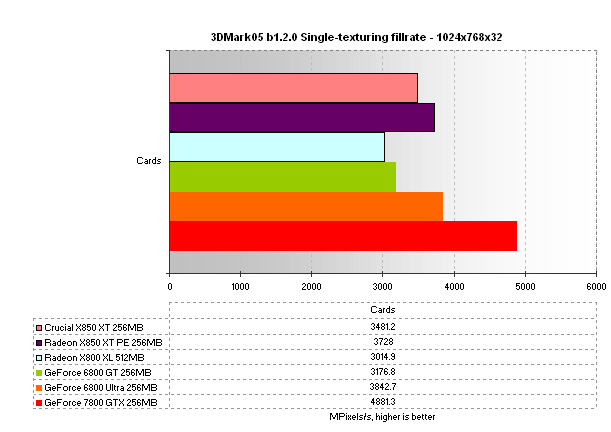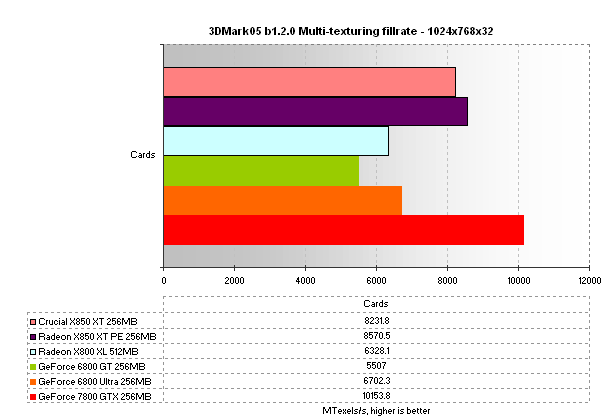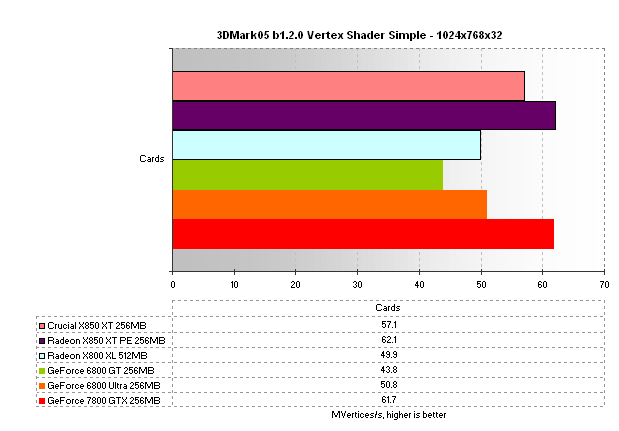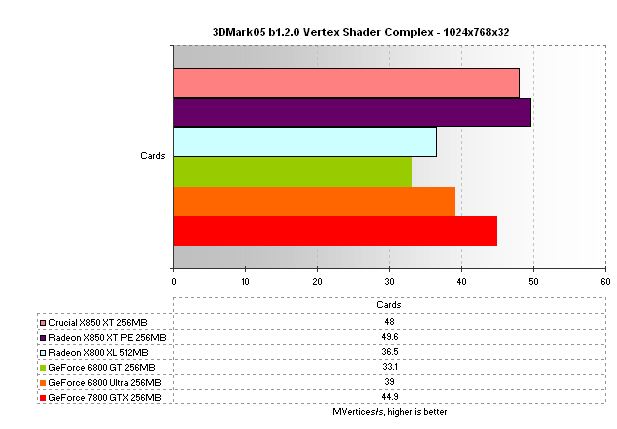Fillrate and shading
Let's take a look at the cards' basic vital statistics.| Card | Crucial RADEON X850 XT | ATI RADEON X850 XT PE | ATI RADEON X800 XL | GeForce 6800 GT | GeForce 6800 Ultra | GeForce 7800 GTX |
| Interface/speed | PCI-Express | PCI-Express | PCI-Express | PCI-Express | PCI-Express | PCI-Express | Onboard memory | 256MB | 256MB | 512MB | 256MB | 256MB | 256MB | Core speed | 520MHz | 540MHz | 400MHz | 350MHz | 425MHz | 430MHz | Rendering pipelines | 16 | 16 | 16 | 16 | 16 | 24 | Fillrate (multi-texturing) | 8.32GTexels/s | 8.64GTexels/s | 6.4GTexels/s | 5.6GTexels/s | 6.8GTexels/s | 10.32GTexels/s | Memory interface | 256-bit | 256-bit | 256-bit | 256-bit | 256-bit | 256-bit | Memory speed | 1080MHz | 1180MHz | 980MHz | 1000MHz | 1100MHz | 1200MHz | Memory bandwidth (max) | 34.56GB/s | 37.76GB/s | 31.36GB/s | 32GB/s | 35.2GB/s | 38.4GB/s | Cheapest online price | £340 | £330 | £270 | £240 | £330 | £380 |
Let's take a look at fillrate and shading performance figures from 3DMark05's feature tests.


As one would expect, the Crucial X850 XT's fillrate is marginally lower than a PE's, which is clocked at 20MHz higher core and 100MHz higher memory frequencies.

Pixel shading is better than a GeForce 6800 GT's but pales into comparison against NVIDIA's latest GPU.


Vertex shading has always been an ATI forte.









